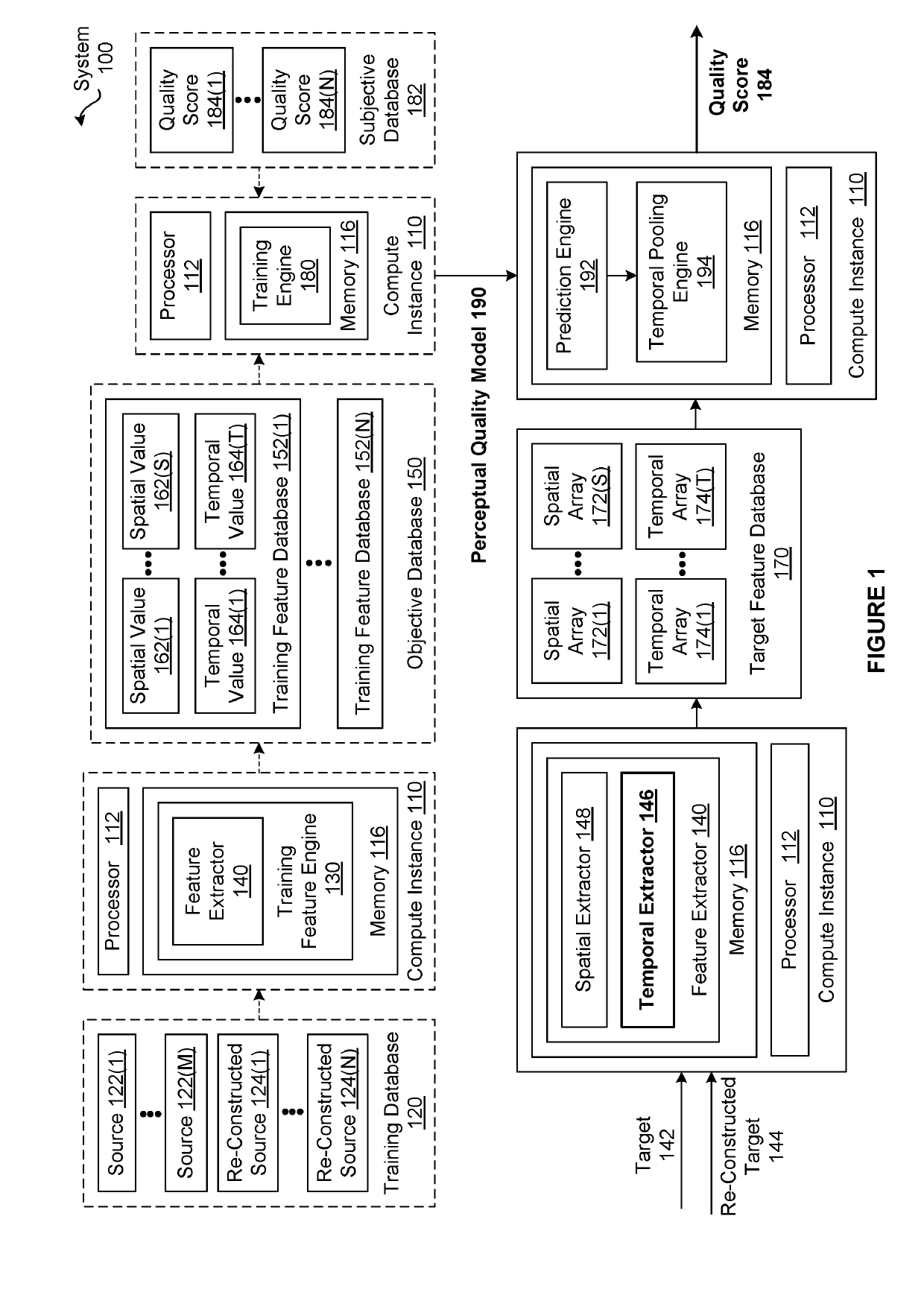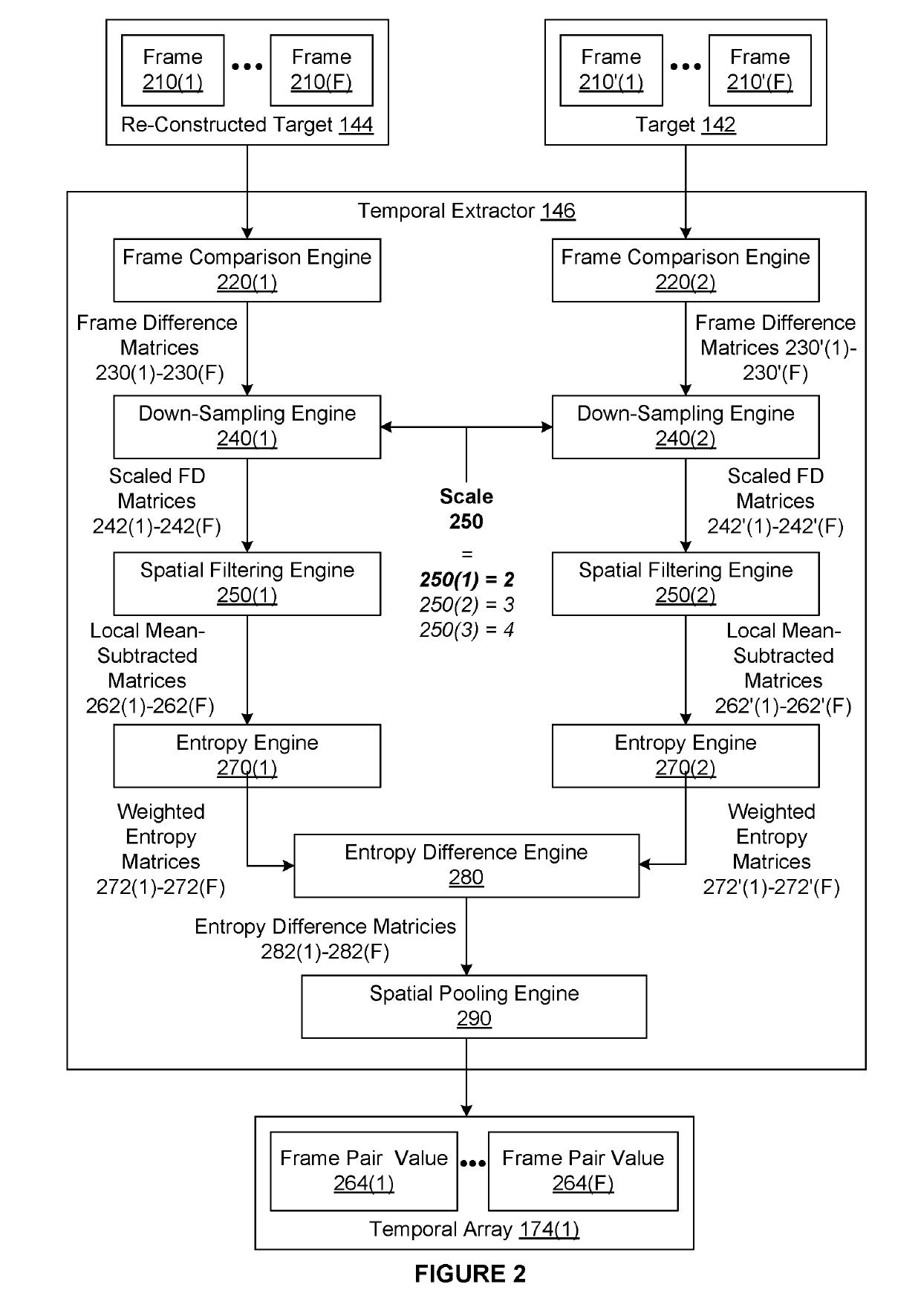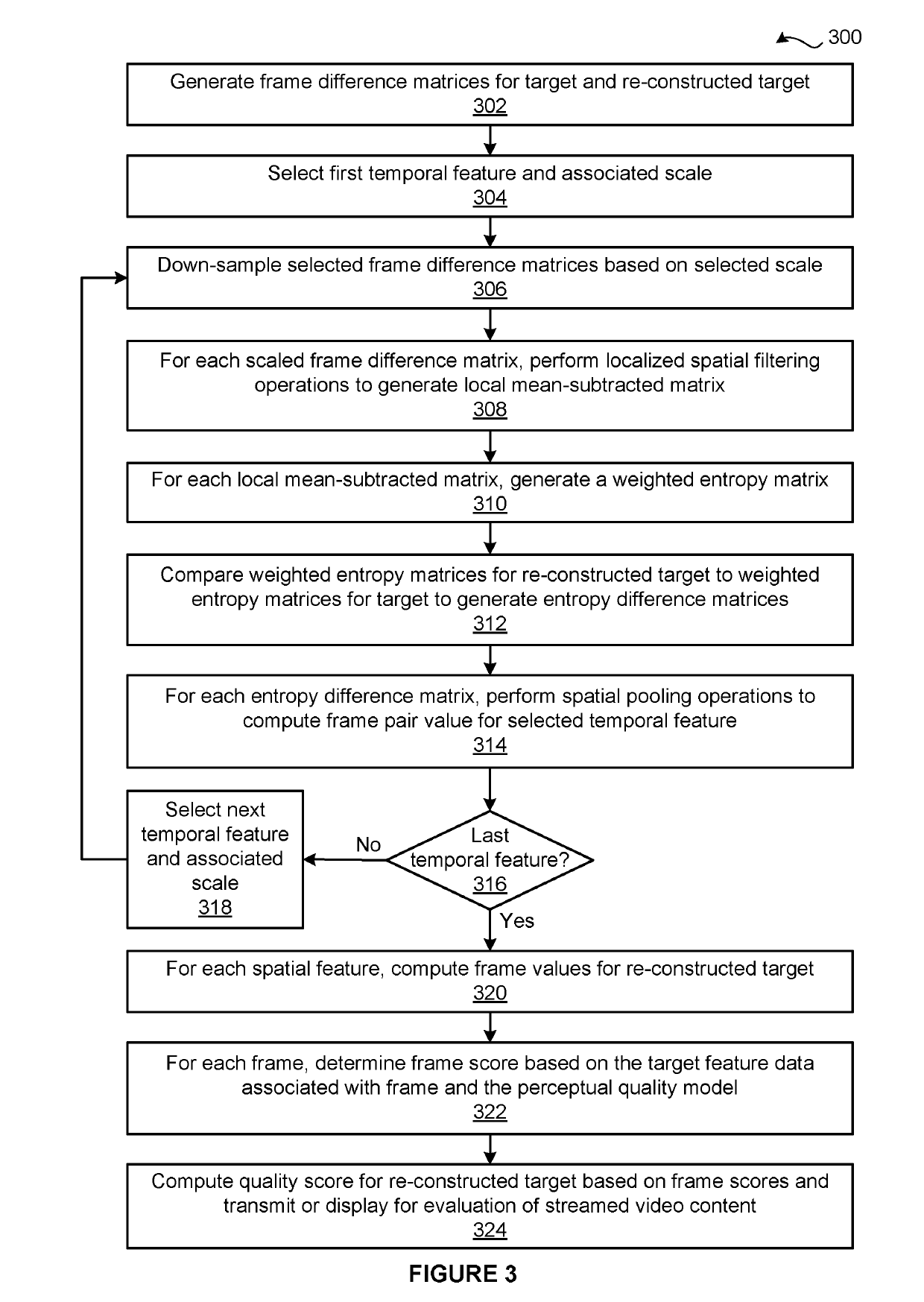Techniques for modeling temporal distortions when predicting perceptual video quality
a technology of temporal distortion and perceptual video, applied in the field of video technology, can solve the problems of inability to accurately predict human perception of the quality of re-constructed video content that includes such distortions, prohibitively time-consuming manual verification of visual quality of re-constructed video content, and lack of robustness of perceptual quality models
- Summary
- Abstract
- Description
- Claims
- Application Information
AI Technical Summary
Benefits of technology
Problems solved by technology
Method used
Image
Examples
Embodiment Construction
[0014]In the following description, numerous specific details are set forth to provide a more thorough understanding of the present invention. However, it will be apparent to one of skilled in the art that the present invention may be practiced without one or more of these specific details.
[0015]The disclosed techniques efficiently and reliably predict quality scores for re-constructed video content via a perceptual quality model that associates values for features with a quality score. Notably, the perceptual quality model is associated with multiple temporal features, where each temporal feature is associated with a different scale. In operation, a temporal extractor computes per-frame values for a specific temporal feature based on re-constructed video content, the associated video content, and the scale associated with the temporal feature. For a given frame, the temporal extractor computes a frame difference matrix specifying differences in luminance between the frame and an ad...
PUM
 Login to View More
Login to View More Abstract
Description
Claims
Application Information
 Login to View More
Login to View More - R&D
- Intellectual Property
- Life Sciences
- Materials
- Tech Scout
- Unparalleled Data Quality
- Higher Quality Content
- 60% Fewer Hallucinations
Browse by: Latest US Patents, China's latest patents, Technical Efficacy Thesaurus, Application Domain, Technology Topic, Popular Technical Reports.
© 2025 PatSnap. All rights reserved.Legal|Privacy policy|Modern Slavery Act Transparency Statement|Sitemap|About US| Contact US: help@patsnap.com



